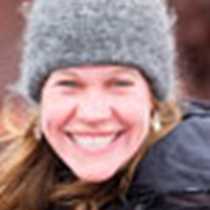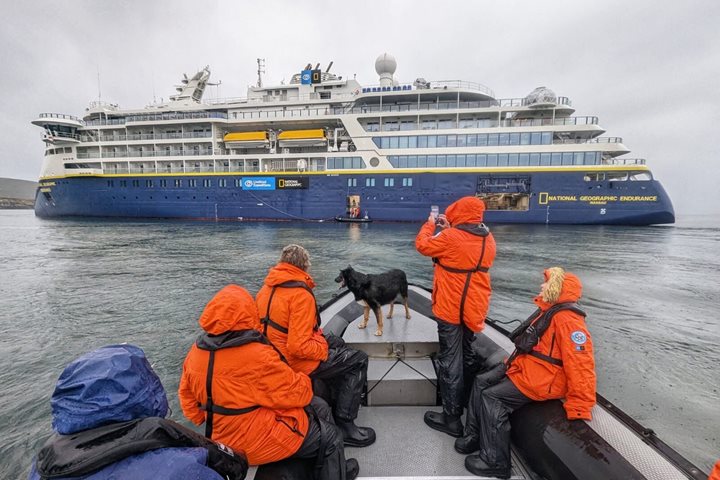We woke to snowflakes cascading down from the skies; outside was a magical snowy wonderland, which was, in appearances, a world away from the godforsaken place that 22 voyagers once called home longer than four months in duration. We had arrived at Point Wild, Elephant Island. As we began our Zodiac cruise operations, in amazingly calm conditions, the clouds opened up with patches of blue skies. The calm conditions belied the harsh reality of this place.
The stark, snow-covered mountains encased an impressive glacier, giving birth to cold gusts of wind. To spend one morning here with dappled sunshine was incomparable to the time that was spent in this cruel location. The tiny patch of rocks where the men made shelter for themselves was now home to a colony of chinstrap penguins, which we both heard and smelled as we approached the rookery. We watched teams of chinnies launching themselves into the surf and other groups swimming back to land to trade places with their penguin partner. The Furness Flacier glimmered in the sun and occasionally calved into the sea. Swarms of pintado petrels bathed themselves in a frenzy of activity, with a few southern fulmars sprinkled in the mix.
After a morning in this dramatic space, National Geographic Orion inched her way south, closer to the Antarctic Peninsula. Not long after departing Point Wild, we came upon a pod of fin whales taking advantage of the rich, cold southern waters. We were lucky to witness these behemoths lunge-feeding and making quite the splash! After watching them feed for some time, it was then our turn and lunch was served. After, we heard tales of the exploration of Terra Australis Incognita from naturalist Alex Searle and were given an illustrative look at the geology of Antarctica from our resident geologist Andreas Madsen. Anticipation gains as we head nearer and nearer to the Great White Continent!







